Conquering Alaska
When you come to Alaska one immediately realizes the vastness of the territory the former Russian Empire lost to North America together with its incredible beauty and natural resources. While the young United States were actively conquering the Wild West after the Civil War of 1861-1865, the Russian Empire abandoned its far away colony and switched to the expanding territories in Central Asia. The governments of the Russian Empire and the United States negotiated the sale of Alaska in 1867. Russia sold its territory with a total area of 1,518,800 km2 to America for 7.2 million dollars. The Empress Catherine II was not involved in this bargain since she died 71 years before Alaska was sold.
According to folk wisdom, whatever God does is for the best. So we will not express our sorrow at the fact that Alaska does not belong to the modern Russia being the successor of the Soviet Union and the Russian Empire. Nowadays, this huge territory, 49th American state, is in safe and careful hands, and that is what really matters.
I flew to Alaska with only one aim — to climb the highest peak of the North American Continent — 6194 m high. Denali Peak is located in the polar latitude.
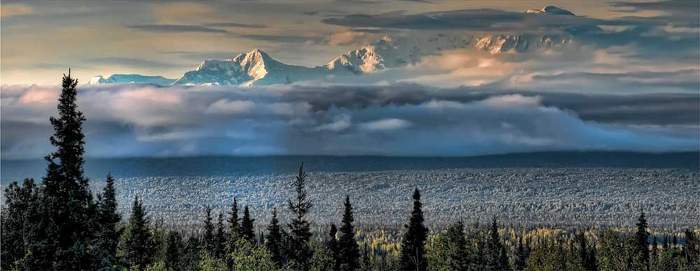
Denali («high»), in the language of the American Indians, is the other name given to the highest peak in North America, Mount McKinley, rising 6194 m high in the mountain chain named Alaska Range. The first Russian colonists who came there in the times of Catherine the Great, and Vitus Bering called it just Big Mountain. Denali was renamed as McKinley in 1896 by prospector William Dikki in honour of the US President William McKinley. In 1980 the mountain and the national park were given back their original Indian name. However the two names — Denali and McKinley are still in use nowadays.

When I arrived in the biggest city of the 49th state from Salt Lake City, I was really surprised by the size of the local airport. While the population of the city is only 250 thousand people, Anchorage international airport takes the 5th place in the world as to the volumes of air-freight operations. I realized how big this airport was only when I was leaving Alaska for the mainland. That’s not the right expression though, since Alaska is the state with the largest area.
I arrived at night and went by taxi to the hostel on the 26th Street, which cost me 25 dollars. The hostel turned out to be a rather unusual place. A hostel is a public hotel which provides short-term accomodation to independent tourists. As a rule, there is always only a bed, no additional facilities. You can rent a dormitory (a room with bunkbeds) for 25 dollars per person with a light breakfast included. The hostel justified its name (26th Street International Hostel): its administrators were a married couple from Katmandu, among the guests with whom I got acquaintained were two students from Almaty — Kuat and Anara who travelling under the students program Work&Travel, two students from Kazan, some fishermen from Serbia, a Baptist preacher from Ohio…
Although we (my fellow mountaineer and I) didn’t have much time for viewing the city and its outskirts, there was one place that we managed to visit before climbing the Denali Peak: The tourism supermarket named Ray — a kind of paradise for those wishing to throw themselves into the Alaskan wildlife. You can find there everything you need for leisure activities including food. We bought some missing mountain climbing gear; in fact we hardly managed to restrain our desire to buy all the goods there. We decided to visit other touristic sites after climbing. At midday we were brought to Talkeetna village from the hostel in a shuttle provided by a transport company for 160 dollars (return trip). Then we were supposed to fly from the village to the big mountain on a small plane. Grayhound, the biggest transport company providing transport services in the main cities and tourist sites in the USA and Canada, does not operate in Alaska. So we had to travel 200 km of the perfect Alaskan roads with Alaska Overland Transportation. The driver was not very communicative, but nevertheless he told and showed us a few things while we «fed» our eyes with the views seen from the car window.
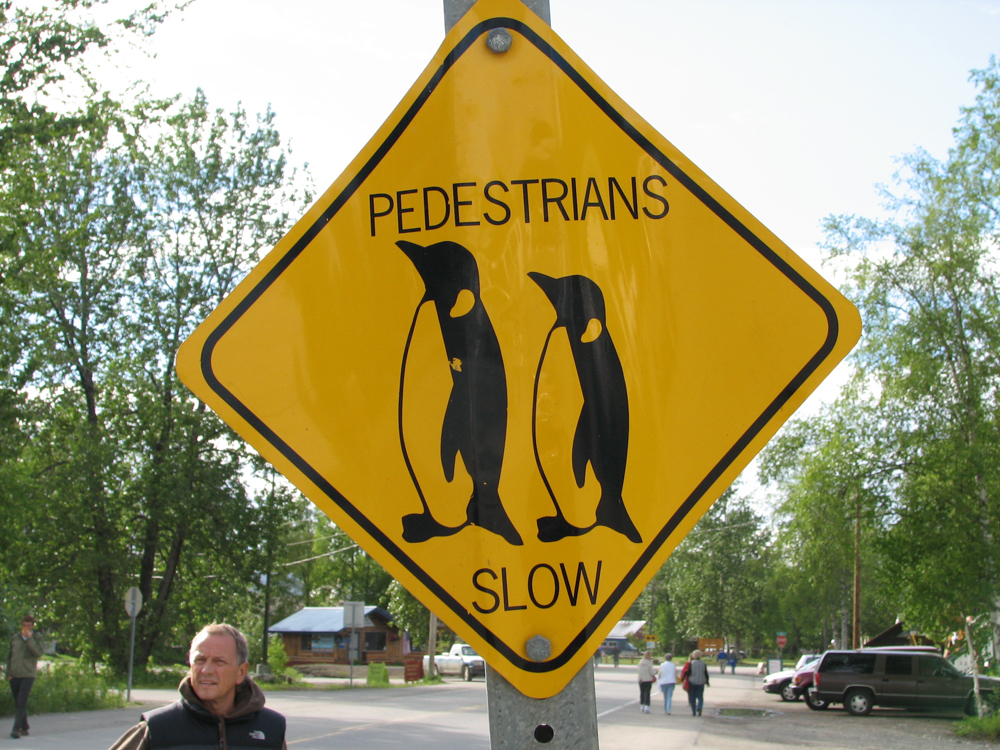
Although the Cold War was consigned to history a long time ago, I was made thoughtful by the driver’s words: «Our military men only need to push a button once to eliminate all the potential enemies of the USA». This was said in connection with so called Area 51, a big secret military base located 200 miles to the north of Anchorage, which is carefully hidden from strangers’ eyes. We couldn’t figure out whether the object fenced with barbed wire, which we saw in the forest, was that very base, but we heard a lot about it. This site was established under the High Frequency Active Auroral Research Program (HAARP) implemented under the aegis of the Department of Defence of the USA and financed by it. Although military men state that no military researches are performed at the site, the results of their work were used as the basis for further military developments related to weather manipulation, controlling human conscience remotely and carrying out long range reconnaissance. One of the effects caused by the operations performed at the complex is artificial northern lights, which are per se a harmless phenomenon, but on the other hand they are a powerful source of radio noise, hindering radio communications.

According to another popular version, this base is used by governmental, military and medical agencies for concealing evidence of contacts with extraterrestrial civilization. American and foreign mass media continuously report about UFOs appearing in Alaska. USA takes the first place in the world as to the number of people kidnapped by aliens.
I remembered one of the first American films shown on TV during Soviet Union —Hangar 18 — about a UFO wrecked in the uninhabited American prairies and further investigations carried out by military men. So the HAARP base is still considered to be the earthmen’s General Headquarters and outpost destined to protect us from aliens.
Having viewed quite enough of pavement freeways and surrounding beauty, huge pick-up trucks and fuel hungry jeeps, we arrived in Talkeetna and went to the office of Talkeetna Air Taxi. This company is very small but nevertheless very popular among tourists and mountaineers, mainly due to the possibility of getting to the Alaska Range very fast. The company planes are equipped not only with wheels but also with skis used for landing on and taking off from a snowfield. It takes you 45 minutes to get to the Kahiltna Glacier. The cost of a trip there and back is rather high — 560 dollars per person. Our plane was piloted by a woman. Being a pilot in Alaska is considered to be a very heroic and respectable profession. You can see photos showing both modern pilots and those from the past in many hotels and restaurants.
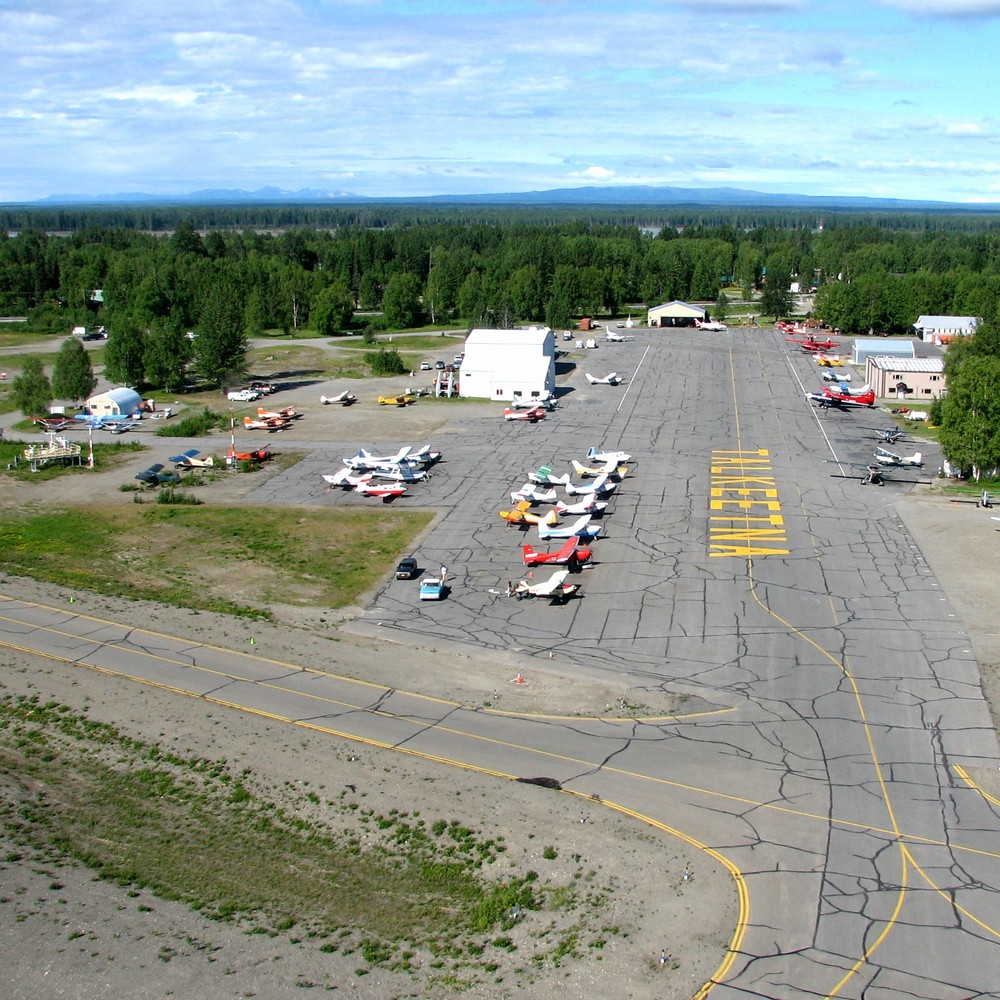
Talkeetna is a special tourist village. It is located in the place where the Talkeetna River flows into the biggest river in the region, Susitna River. You’ll be able to engage in almost any type of leisure activities there — fishing, rafting, walking in the forest, mounting biking and others. But the most important thing is the possibility of getting to Denali very quickly. There is also a ranger station and the office of the national park of the same name where all mountaineers who are going to climb the mountain are instructed and provided with recommendations regarding the route and places for relieving themselves. For the latter, mountaineers are given special bags for garbage and excrements (an individual container for each mountaineer for collecting waste products) called CMC — Clean Mount Can. The park fee is 200 dollars per person.
Having climbed the mountain successfully, we returned to Talkeetna where we celebrated our success together with our new friends in a Swiss cuisine restaurant. Then we went to one of the numerous village bars with country music and rednecks. Redneck is a slang term used for calling American provincials, mainly those living in the southern agricultural areas. Because they worked their whole lives under the scorching sun, their necks were burnt in a particular manner and became literally red. That is why American farmers were named like that. There is another politically loaded version about the origin of this expression saying that the name appeared due to red scarves tied around their necks. According to this version, pioneers may also be called rednecks.
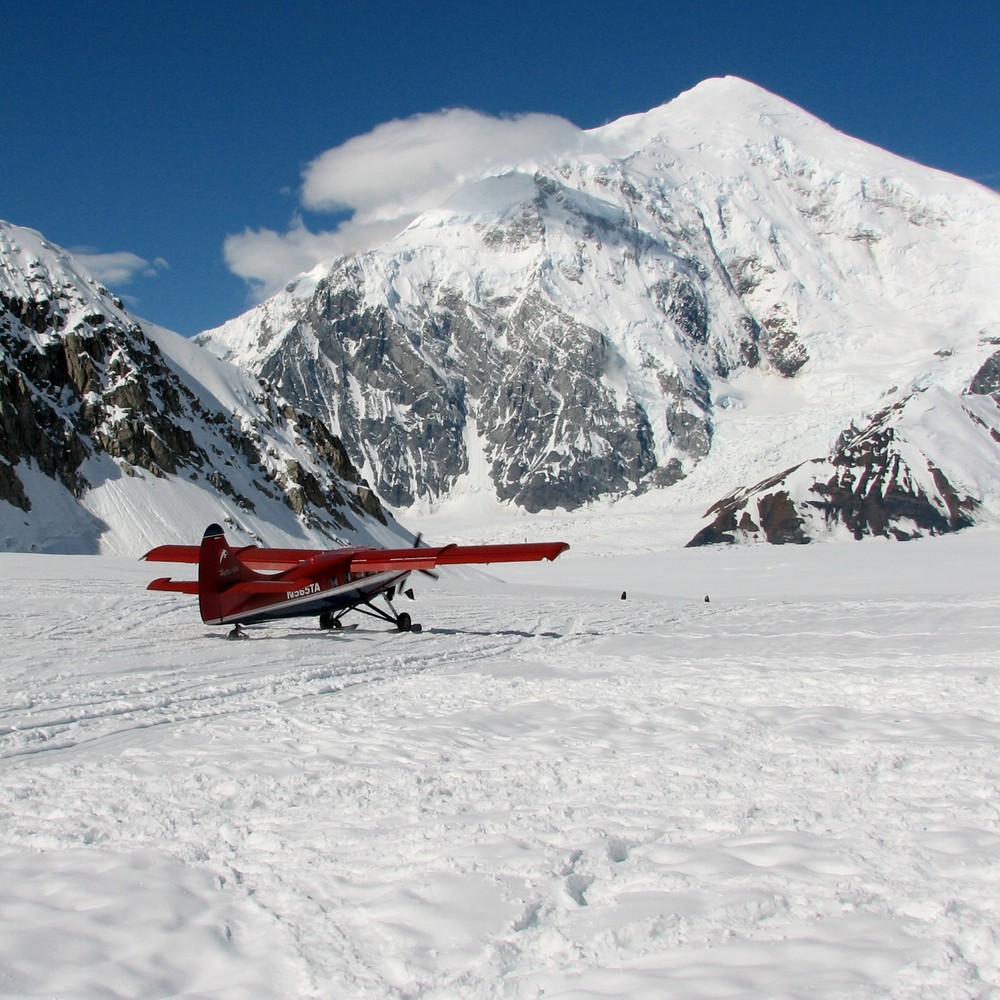
On the next day we bought traditional souvenirs which consisted mainly of items made from bones, and sent postcards to our homes. We were picked up by shuttle from the company office and brought to Anchorage via the office of the national park where we confirmed our being safe and sound, were registered by the rangers and gave them our Clean Mount Cans filled during 10 days of journey. Anchorage is the biggest city in Alaska. 42% of the state’s population lives there; there is only one city with higher percentage of citizens living in the main city — New York. But despite this fact, the state capital is the city of Juneau, not Anchorage. Juneau is located to the south of Anchorage. There is nothing there, except for the government and provincial airport. This is a common practice in America: financial and business capitals are separated from official ones. Unlike the great New York and Washington, or Anchorage with its huge international airport, Juneau is hardly known by anybody. Anchorage is located at 63 degrees north latitude further north than Oslo, Helsinki, Stockholm and Saint Petersburg, but further south than Reykjavik and Murmansk.
I have heard much about American automobile culture and I had a chance to get familiarized with it personally in Anchorage, more precisely with the absence of such culture according to my perceptions. We went for a walk in the city in order to look for a supermarket. We wanted to buy a head camera. We walked long enough, but we didn’t see any big shops. We dropped in a small shop to ask where the nearest big one was. «Go straight ahead to the crossroad, then turn left, walk about 100 m and you’ll find the shop» — explained the saleswoman. We went to the crossroad and turned left, but there was no supermarket in the next 100 meters. We thought a little, looked at the road and understood everything. Local people can’t even imagine that someone would walk in the city, so they explain everything keeping drivers in mind. A driver would not be able to turn left at the crossroad where we turned: that was a one-way street with only right turn allowed for cars. That meant that we should have turned left not at the first crossroad, but at the first crossroad where cars were allowed to turn. Our conclusions turned out to be correct and we found the supermarket after making adjustments to the route.
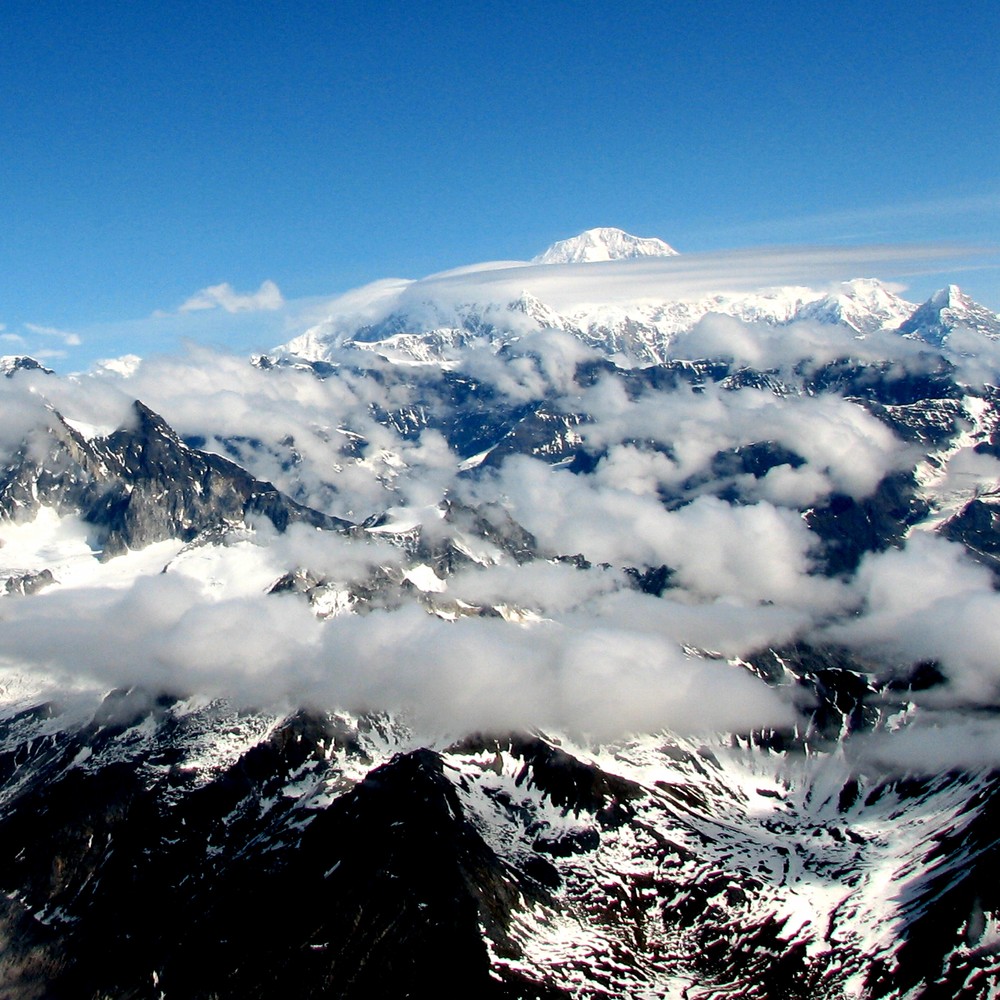
Prices at the supermarket didn’t seem to be very high, especially as compared to American salaries. However, if you don’t have much money but you wish to buy clothes, equipment, gold jewelry, binoculars and photo cameras, you can go to local second-hand shops. You can buy there even second hand weapons. In the weapon department of a second hand shop we saw a real Russian revolver manufactured in 1916. That moment I was close to tears.
The second largest and economically significant city is Fairbanks. We didn’t visit it, but nevertheless it is worthy of being mentioned. The city was established in early XX century in connection with the Gold Rush in Alaska, which is a milestone event in the American history. Fairbanks is located in the fertile Tanana Valley where crops grow sucessfully despite the severe climate. Tourism is well developed, 350 thousand tourists come there annually. This fact is connected not only with history and pristine nature. The international sled dog race Yukon Quest has been taking place between the cities of White Horse in Canada and Fairbanks since 1984. The race is carried out annually in February. The route of this race runs includes frozen rivers, goes over four mountain ranges and through sparsely populated areas. As usual, the temperature at that time of year falls to 50° below zero and stormy icy wind blows. The route is 1000 miles (1600km) long.
Those who wish to blame the blameless Russian empress first and foremost refer to the Gold Rush — the unorganized large-scale gold mining at the Klondike River that took place in the late XIX century. The Gold Rush started in 1896-1897. The news about gold found in the Canadian territory of Yukon at the Klondike River in 1986 spread over the whole America. Since gold was found at the Bonanza Creek near the Klondike River, the word «Klondike» has been used as a synonim of «incredibly rich deposit, the source of overwhelming wealth». The biggest gold mines in Alaska were discovered in Nome in 1898 and near Fairbanks in 1902. For more than a hundred years from the moment the mine was discovered, about 12.5 million ounces (20.12 cm3) of gold have been extracted there. The Gold Rush is mentioned in several novels by Jack London: «And most ferociously and terribly of all does the Wild harry and crush into submission a man — the man who is the most restless in life, ever in revolt against the dictum that all movement must, in the end, come to the cessation of movement» (White Fang novel).
For the Soviet boys, including me as well, the adventure novels by Jack London were a kind of guiding star in the formation of a real man’s character. The characters of Sea Wolf, The Call of the Wild and White Fang still appear vividly in my dreams.

Jack London did not spend much time in Alaska. In 1897 he went to the North in order to take part in the Klondike Gold Rush where he wrote his first successful stories. During the time spent by him at Klondike, his health was subjected to significant negative effects. He fell ill with scurvy, like many other people whose diet was very poor. His gums got swollen and finally his four front teeth came out. He had continuous pain in his stomach and leg muscles; his face was covered with numerous scars which would constantly remind him about the time spent at Klondike. Finally, the writer had to go back to the mainland.
So did we. After two weeks in Alaska, we also had to go back. From Alaska I was expected to go to California with its famous beaches, movie industry and wines, then the great New York, and the cities of Louisville in Kentucky and Cincinnati in Ohio in between.